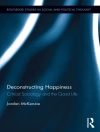How do people traditionally situated on the margins of societyupeople of color, women, gays/lesbians/bisexuals, and those from a lower socio-economic statusucommunicate within the dominant societal structures? Constructing Co-Cultural Theory presents a phenomenological framework for understanding the intricate relationship between culture, power, and communication. Grounded in muted group and standpoint theory, this volume presents a theoretical framework that fosters a critically insightful vantage point into the complexities of culture, power, and communication. The volume comprises six chapters; key coverage includes: a review of critique of the literature on co-cultural communication; description of how the perspective of co-cultural group members were involved in each stage of theory development; an explication of 25 co-cultural communication strategies, and a model of six factors that influence strategy selection. The final chapter examines how co-cultural theory correlates with other work in communication generally and in intercultural communication specifically. Author Mark P. Orbe considers inherent limitations of his framework and the implication for future research in this area. Scholars and upper-level undergraduate and graduate students will find that this volume covers an important topic which will be of interest to those in the fields of communication, cultural studies, and race and ethnic studies.
Mark P. (Western Michigan University, USA) Orbe
Constructing Co-Cultural Theory : An Explication of Culture, Power, and Communication [PDF ebook]
An Explication of Culture, Power, and Communication
Constructing Co-Cultural Theory : An Explication of Culture, Power, and Communication [PDF ebook]
An Explication of Culture, Power, and Communication
¡Compre este libro electrónico y obtenga 1 más GRATIS!
Idioma Inglés ● Formato PDF ● ISBN 9781452246574 ● Editorial SAGE Publications US ● Publicado 1997 ● Descargable 6 veces ● Divisa EUR ● ID 5351900 ● Protección de copia Adobe DRM
Requiere lector de ebook con capacidad DRM












